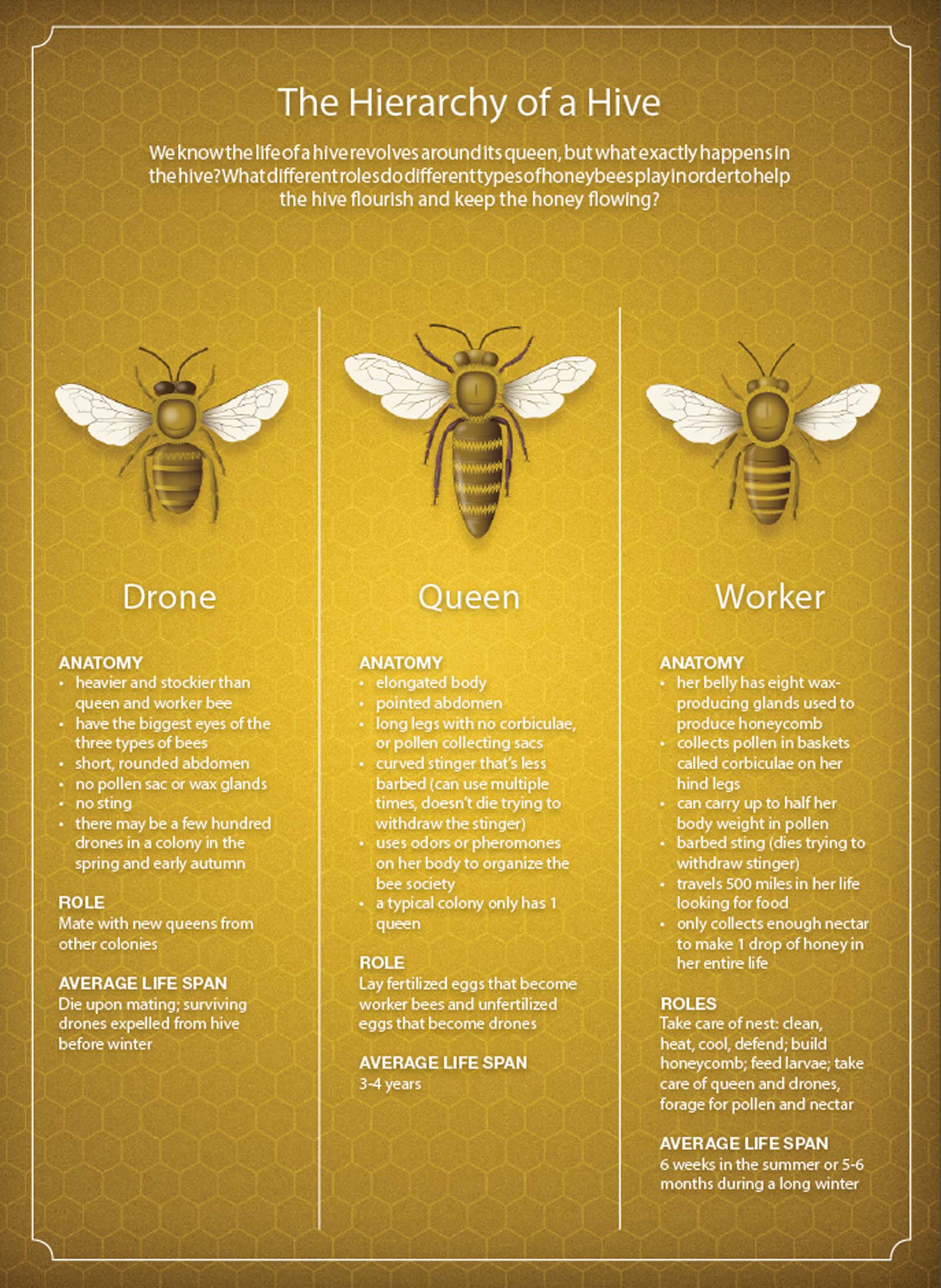Vanquishing the Varroa
Protecting the pollinators who help feed the world
By: Vanessa Beeson

A worker bee in a hive. The opaque cells are capped, which protect bee pupae as they develop into adult bees. These little domiciles are also a perfect place for varroa mites to hide while feeding on the bees. Learn more about these fascinating pollinators by visiting www.mafes.msstate.edu/discovers. (Photo by Kenner Patton)
The information presented on this page may be dated. It may refer to situations which have changed or people who are no longer affiliated with the university. It is archived as part of Mississippi State University's history.
Insects are often used as medical models. In fact, the 2017 Nobel Prize in Physiology or Medicine was awarded to a team of researchers studying circadian biology in fruit flies. Dr. Natraj Krishnan, MAFES entomologist and associate professor in biochemistry, molecular biology, entomology, and plant pathology, studies the fruit fly as a medical model to learn more about neurodegenerative diseases, but it's his work in bees that's a little unexpected.
Krishnan and Dr. Jeffrey Harris, MAFES entomologist and associate extension and research professor in biochemistry, molecular biology, entomology, and plant pathology, have a current project focused on fighting varroa mites in bees. Their research has flipped the script-instead of developing models in insects to apply to human health, the team is using medical technology developed for humans to help the honeybees.
They've partnered with Dr. Amol Janorkar and his doctoral student Jared Cobb, both at the University of Mississippi Medical Center, to use an emerging drug-delivery system to help bees in the fight against the small but mighty varroa mite.
"Dr. Janorkar is known for developing polymer-based technology for medical use. During different types of medical and dental procedures, such as skin grafting or bone grafting, the polymer-based nontoxic material acts as scaffolding surgeons apply to the wound area, which serve as the backbone for new tissue to grow," Krishnan said.
Harris said Cobb's uncle, who is a beekeeper, encouraged him to find a way to use the material to help honeybees. That's when Janorkar and Cobb reached out to the MSU team for their entomological expertise. From there, Janorkar and Cobb developed new anti-varroa drugs to be delivered via the polymer-based nontoxic material.
"We are performing toxicological studies on drug formulations developed by our collaborators at UMMC," Harris said. "The drugs are designed to slowly release oxalic acid or thymol into the hive environment in a temperature-independent fashion, which is important to avoid over-gassing bees with these drugs in hot weather."
Harris said that Angus Catchot III, a master's student under his direction, will be the primary leader of the toxicological studies for the new drugs.
Like Cobb, Harris's uncle was also a beekeeper.
"I spent summers working on the family farm in Virginia," Harris remembered. "I watched my uncle catch swarms one summer and the following spring I was riding my bicycle home when I saw a swarm low to the ground. I remember coming home with my bicycle in one hand and a branch with a swarm in the other. My mother was shocked, but my dad built a box to put the bees in and I've kept bees ever since."
Since the 1980s when the invasive species first started impacting hives in the U.S., Harris has watched the varroa mite become more and more of pest for beekeepers everywhere. Scientists estimate that perhaps more than 70 percent of all colony losses in the U.S. are directly related to varroa mites.
Since the 1980s when the invasive species first started impacting hives in the U.S., Harris has watched the varroa mite become more and more of pest for beekeepers everywhere. Scientists estimate that perhaps more than 70 percent of all colony losses in the U.S. are directly related to varroa mites.
A female mite enters a brood cell, preferably the cell of a drone larva, just before the cell is capped. Once inside, the mite feeds on the bee pupa to get nutrition for laying her own eggs. She produces several mite offspring, and by the time an adult bee emerges from its cell, several mites emerge with it and set out to find other adult bees or larvae to parasitize.
Although varroa mites prefer drone brood, colonies of honey bees are compromised when significant numbers of mites infest developing worker brood. Drones do not perform tasks that help a colony survive because they serve primarily in reproduction by mating with queens from other colonies. Alternatively, adult worker bees perform a myriad of tasks that keep a colony of bees healthy and productive. If the health of these workers becomes compromised, then the entire colony can be threatened. Most of the harm to a colony of bees originates from direct trauma from the mites feeding on worker pupae and from the transmission of viral diseases to these young bees.
"Currently, the best time to treat for varroa mites is in mid-November when there is no brood, or bee pupae in the hive," Harris said. "When the mites are inside the capped cell with bee larva or pupa, they are essentially protected from any kind of chemical treatment a beekeeper administers to get rid of them. That's why treating the hive when no brood is present is really the most effective way to diminish mite loads."
One of the most reliable methods for killing mites in broodless colonies in the autumn (September through December) is the vaporization of oxalic acid into a colony of bees. However, Harris pointed out, this timing is a problem for beekeepers whose hives experience high mite loads in the summer months.
"If you harvest your spring honey in June, and you notice a lot of mites, you need to treat right then. If you wait until November, then the hive will most likely be lost," he said.
The problem, Harris said, is that some of the current chemical treatments-including organic acids and thymol-become more volatile in hot weather. Some chemical formulations release too much active ingredient into the hive on very warm days. This can result in the death of thousands of bees or even a whole colony.
An additional complication with treating colonies is that brood found in the hive during the spring and summer gives mites a place to hide. Harris said that more than 60 percent of the mites can be protected from exposure to miticides by living in brood cells at any moment when chemicals might be applied.
"That's why it's important to develop a delivery system that releases the chemical at a steady rate over longer periods," he said.
Each mite is protected while the brood cell is capped, which for worker bees is around 12 days. During that time, the female mite is producing a family in a brood cell. After the new bee chews out of the capped cell, the mite will spend on average about a week on adult bees-where she is vulnerable to chemicals-before re-invading another brood cell to raise another family.
While oxalic acid vaporization coats the entire hive, after a few days the bees clean it up which means any mites that were in brood cells during treatment were left unexposed.
"We are looking to find a method that will release this chemical in a safe manner over a longer period of time. The idea is to have a constant level of miticide in the hive that will not vary when the temperature outside the hive varies. This stable rate of release is important because the dose in the hive will be kept at a level that is harmful to mites but not detrimental to the bees. Over 45 days during two or three cycles of emerging bees, however, most mites in the hive will be exposed," Harris said.
The team is developing a laboratory assay to determine a dose of the new anti-varroa drug and delivery system that kills the mites while being safe to the bees.
"We will administer a series of doses from very high to very low to find the dose that effectively kills the mites," Harris said.
From there, the researchers will investigate mite mortality in relation to short- and long-term exposure.
"They get both a brief and longer exposure and we will investigate mortality at those different intervals and at different doses," Harris explained.
After that, the team will test the drug's effect on bees.
"We'll pick the highest effective dose that works on mites and measure the quality of the bees. We'll have bees with known mite loads and follow them every two weeks and take measurements. How's the queen, how's her health, how has the brood changed, how have the mite loads changed? We will compare this to existing treatments being used and compare the data," Harris said.
Krishnan said he's excited about the collaborative nature of the project.
"It's interesting to see these different areas of expertise-from the biomedical field to insect physiology-intersect and integrate to solve a problem that's related to agriculture. That's exciting to me," Krishnan said.
He said, to his knowledge, this is one of the first times any human drug delivery system has been proposed for the treatment of an insect.
"This research will open up a new avenue of how infectious agents are dealt with within the bee populations. Thus, when compared to the traditional methods of fumigation, this polymer-based drug delivery system is poised to offer many environmental and safety benefits," Krishnan said. "Importantly, it is a water soluble, commercially available polymer that is widely used in the medical field due to its nontoxic and biologically inert nature. The elastin-like polypeptide has a similar molecular structure to resilin, an elastin-like substance already present in insect cuticle."
The work is sponsored by the USDA National Institute of Food and Agriculture.
This research will open up a new avenue of how infectious agents are dealt with within the bee populations.
Dr. Natraj Krishnan
Behind the Science

Jeff Harris
Associate Extension/Research Professor
Education: B.S., Physical Sciences, Auburn University; M.S., Entomology, Ph.D., Insect Physiology, Louisiana State University
Years At MSU: 7
Focus: Provide expertise in beekeeping to help the commercial beekeeping industry with problems and issues that adversely affect their livelihoods, and conduct research on honey bees that are resistant to diseases and parasites
Passion At Work: Solving the biggest health issues of our commercial beekeeping industry improves availability of this important managed pollinator for agricultural crops that benefit from their pollination service.

Natraj Krishnan
Associate Professor
Education: B.S., Zoology, University of Burdwan; M.S., Zoology, Banaras Hindu University; Ph.D., Zoology, Vidyasagar University
Years At MSU: 7
Focus: Neuroendocrine regulation of response to stress (biotic and abiotic) in insects
Passion At Work: I strive to combine cutting-edge basic science with applied research in biomedicine and agriculture.

